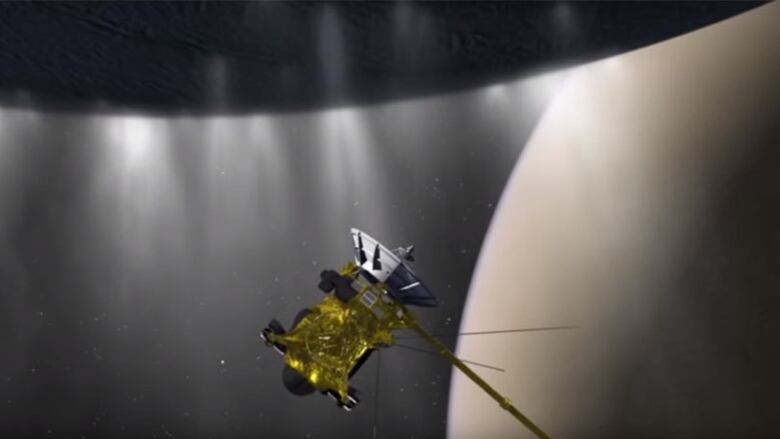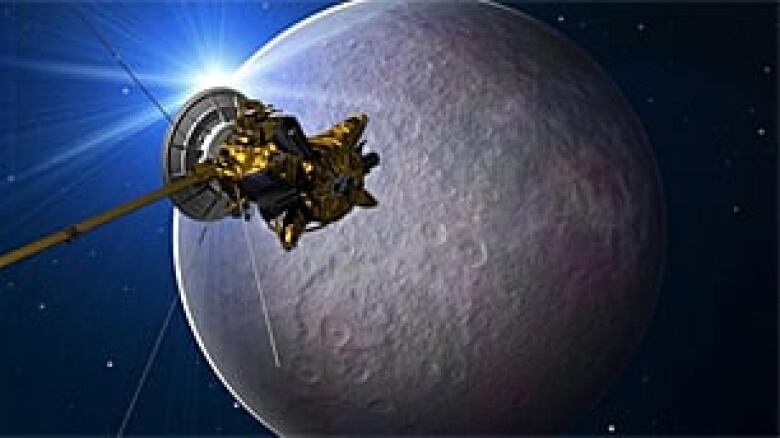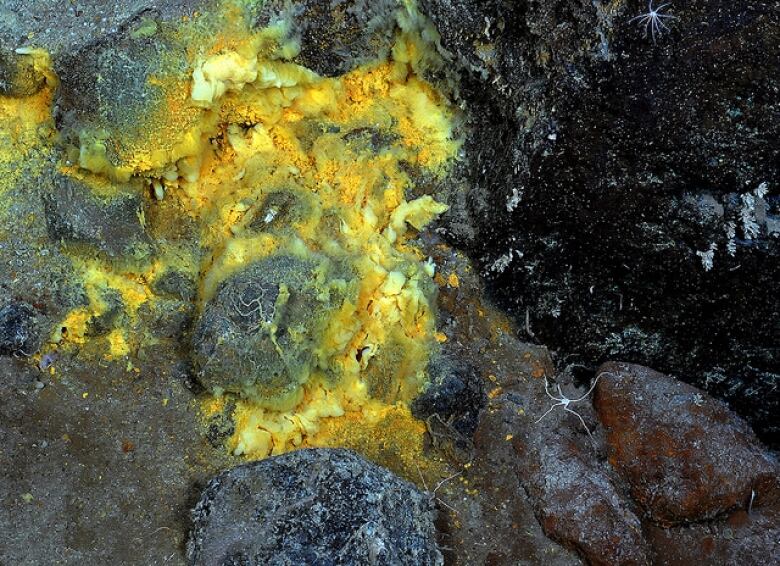Forget life on Mars, how about life inside moons?
Icy moons may contain life, deep within: Bob McDonald

The Cassini Spacecraft made a daring, close flyby this week of Enceladus, one of Saturn's icy moons, to get a taste of water ice spewing from the moon's south pole.The results could provide clues to the best place to look for life beyond Earth.
Enceladus is one of at least four moons in our solar system known to have liquid oceans beneath their icy surfaces. In the case of Europa, a moon of Jupiter, its ocean holds more water than all the oceans on Earth.
That's a lot of water out there in space, and, as we have found on Earth, where there's water, there's life.

Fortunately, Enceladus has provided an opportunity for us to sample its ocean through long deep fissures in the ice, called tiger stripes, that run along the moon's south pole. Water from below works its way through the fissures to the surface, where it blows out into space, instantly freezing into icy plumes.
Enceladus is only about 500 km across, so it would easily fit between Toronto and Montreal. That makes the gravity on its surface very low, so most of the material that blows out of the cracks in the ice does not fall back down.
Instead, it forms a hazy ring around Saturn, outside the main rings.That means if you were standing on the surface of Enceladus beside one of these fissures, you would see snow falling up.
Cassini has flown through these plumes before, the first time in 2008, but this week's encounter was the closest only 50 km above the surface.

On this pass by Cassini, the scientists are hoping to find hydrogen, which could have come from hydrothermal vents on the floor of the moon's ocean, similar to those found in the deep oceans on Earth.
You can see hydrothermal vents in action through Canada's unique Neptune Project,off the coast of British Columbia, which involves a series of cameras permanently installed on the ocean floor. Warm water, heated by the Earth, oozes out of cracks carrying hydrogen sulfide, minerals and nutrients, which nourish bacteria and a whole food chain of creatures that thrive around the vents.
These living systems are in total darkness, using chemosynthesis instead of photosynthesis as an energy source. They do not need sunlight to survive.
In fact, some have suggested that these types of vents are where life could have first appeared on Earth.If similar vents exist on the ocean floors of ice moons, could life be there as well?
Cassini is not equipped to answer that question, but NASA's Europa Mission,due to launch in the 2020s, will be another step in the right direction.

Today, the surface is cold, very dry, and bathed in unfiltered UV radiation from the sun, because the planet lacks ozone in its atmosphere. So, the surface of Mars is pretty inhospitable now.
Ice moons, on the other hand, provide warm, wet environments that are much more comfortable for life, and those oceans exist today.
If we really want to find life beyond Earth, and prove that we are not alone in the universe, we'll have to start thinking about doing some very deep ice-fishing.












_(720p).jpg)


 OFFICIAL HD MUSIC VIDEO.jpg)
.jpg)



























































































